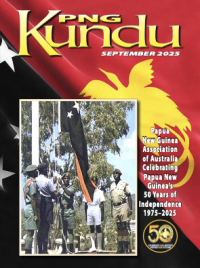Remembering kiaps: Paul Oates
Speech by Paul Oates at the National Archives of Australia Kiap History day, 20 November 2010
Senator Lundy,
Maj. Gen Jeffery,
High Commissioner Lepani,
Director and staff of the National Archives,
fellow former kiaps, their partners and family,
Ladies and Gentlemen,
Together with the loyal men of the Royal Papua New Guinea Constabulary, kiaps, didimen, ‘chalkies’, co-ops officers, medical assistants, and many others, not the least being the Papuan New Guinean people, all worked together to develop PNG.
While there may have been a total 2,000 of us who served as kiaps prior to 1974, there were often only a few hundred kiaps in field postings at any one time throughout the Territory of Papua New Guinea. By the early 1970s most of the 18 Districts had no more than an average of 25 kiaps serving on rural outstations. Most of the Territory’s then population of 3 million lived in rural areas and, it would be fair to say, well over 90% of the Territory’s population were primarily administered by the kiap system.
We don’t need to be told what we did, yet our country knows very little about us or,
for that matter, about PNG. The fact that we are here today is a testimony to the years of work Chris Viner-Smith has devoted to this project. We should also acknowledge those who helped Chris ensure government support for this event to happen. Finally and most importantly, we should thank the efforts and hard work by the staff of National Archives.
This display is a significant step along the way for Australia and Papua New Guinea to recognize that something very important happened in our shared history. In world history, there has rarely been a more significant event in any country’s history like the emergence of a modern Papua New Guinea from what was essentially a Stone Age culture in the space of one person’s lifetime. This emergence happened without major bloodshed or severe disruption and revolution yet PNG people have perhaps the most diverse range of cultures and languages the world has ever seen in one country.
We are gathered here as a testimony to the past, in a building dedicated to the past. We are also here representing our comrades who could not be here but are still remembered. We were few in number and statistically, our casualty rate was comparable to that sustained by Australian troops in the Vietnam. Yet up until now, our country really had no idea of what we did.
Those of us who came later remember with respect those who went before us and in whose footsteps we trod. We glimpsed what it was like for them as we helped create the future. Unlike almost any other administering power, when we were told our time was up, most of us left PNG around the time of Independence.
While we left PNG a long time ago, the memories still remain.
(Tokpisin) Pastaim mipela ibin lusim hap graun bilong Papua New Guinea long planti Krismas igo pinis, tasol tingting bilong mipela istap yet wantaim ol.
(Motu) Lagani na momo ai Papua New Guinea ame raka tani to emai helalo na badaherea baine mia hanaihanai una tanobadai.


